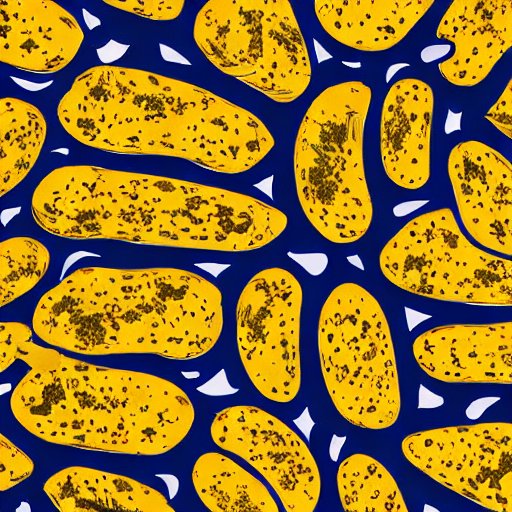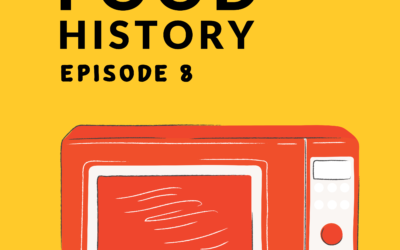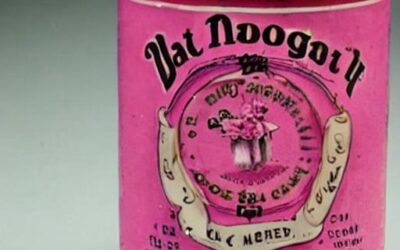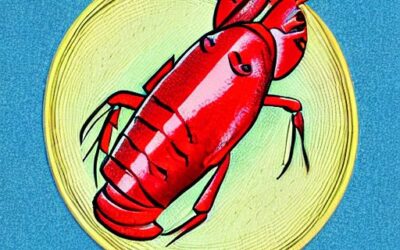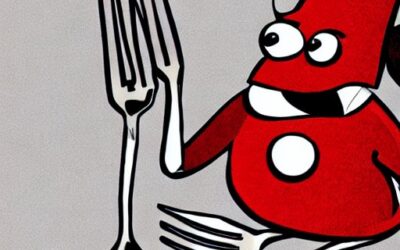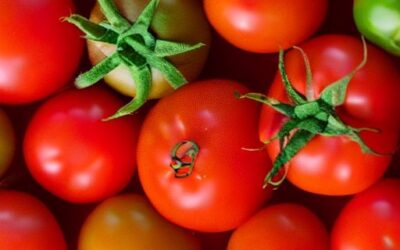Mashed, boiled, roasted, or fried potatoes are a beloved staple worldwide, but this has not always been the case. The humble potato had a tough time. It has been hailed as an aphrodisiac, banned for causing leprosy, entangled in the rise of empires, and the death of at least a million people.
Read till the end to find out what lessons we can draw from how potatoes went from food not even peasants would want to something that massively shaped our modern civilization. You will look at our tuber friends with new eyes.
These roots are made for walkin’… across the Atlantic
Potatoes are now so present in European diets that it’s easy to forget they are native to South America. They are believed to have been domesticated about 8000 years ago on the borders of what is now Peru and Bolivia. More than 4000 varieties are still grown today in a rainbow spectrum of colors and sizes. You likely have seen the yellow one – though the orange, pink, purple, blue, and inky black versions are harder to come across.
And just like the tomato, they came to Europe thanks to the Great Columbian Exchange. We will dive deeper into that part in the next episode on tomatoes.
At that time, Europe was struggling with wide-reaching famine and malnutrition. The historian Fernand Braudel once calculated that France had 40 nationwide famines between 1500 and 1800, more than once per decade. And this is a total understatement since this calculation doesn’t include the hundreds and hundreds of local famines that took place during that period.
Looking into the history of the potato surely already has one big lesson: we can be so grateful for the abundance and security of food that we have today. That is not to be taken for granted.
Before the potato and intensive fertilization, living standards in Europe were similar to those in Bangladesh and Cameroon today. Most European peasants had less to eat than hunter-gatherers in Africa and the Amazon. Potatoes and industrial agriculture enabled countries to produce their food reliably.
A single acre of land cultivated with potatoes and one milk cow is enough to feed a large family of six to eight and provides the most necessary nutrients. You couldn’t pull that off with wheat or any other cereal. Potatoes provide the most nutrition per acre compared to most other crops.
But between the arrival of potatoes in the 1500s and their adoption, 300 years passed.
Instead of saving lives, the potato was shunned. People regarded it with suspicion, distaste, and fear. A decision that cost many lives.
So how did potatoes develop from being pigs’ food to laying on the plates of the rich? This is a fascinating story that involves some clever maneuvers by some clever people that we can learn from.
Dangerous pig’s bread: how potatoes were disregarded
So first – what were the issues? What were the obstacles for our beloved earthy tuber friends?
Again, as with tomatoes, there was a fear of potential health issues. And religion, as well as mental associations, played a significant role. The potato had a serious branding problem.It was not mentioned in the Bible, so some clergymen argued God had not meant people to eat them.
Secondly, herbalists believed their appearance showed what diseases they could cause or cure. And well – let’s be frank, potatoes would not win a beauty contest.
Moreover, potatoes were believed to cause leprosy. The hands of leprosy patients and potatoes have some similarities. Trust me – I just googled it so you don’t have to.
And thirdly, as if that is not enough, more scientifically inclined botanists identified the tubers as members of the poisonous nightshade family, just like tomatoes. So, they also became associated with witchcraft and devil worship.
And that’s how potatoes stayed away from human plates and ended up as animal feed. They even earned the name “pig’s bread” in France.
PR stands for PRUSSIA
What the potato needed were some great PR campaigns, so let’s look at some of the greatest Potato champions and how they polished the dusty image of the humble potato. One of its great champions was about to arise, Frederick the Great, King of Prussia, who saw the potato’s potential to help feed his nation during war. He ordered his footmen to distribute instructions on how to plant them. But it wasn’t that easy because he had to overcome prejudice against the plant.
In 1771 a paper from the Faculté de Paris testified that the potato was not harmful but beneficial. But a public institution stating this was not enough to overcome suspicion.
Three years later, Frederick the Great issued an order to grow potatoes as protection against famine. One town replied: “The things have neither smell nor taste; not even the dogs will eat them, so what use are they to us?”
This is where Frederik the Great lived up to his name and started some great maneuvers. He thought: what would make something that people regard as pigs food something they would want to eat.
So he tried a less direct approach: he planted a royal field of potato plants and stationed a heavy guard to protect this field from thieves. Nearby peasants naturally assumed that anything worth guarding was worth stealing, so they snuck into the field and snatched the plants for their home gardens.
Of course, this was precisely what Frederick had planned all along.
Flour wars and the use of potatoes by the military
In France, another important advocate for the potato was Antoine Parmentier. Parmentier was an army pharmacist during the Seven Years’ war and spent a lot of time as a captive of the Prussians (they caught him 5 times).
In France, potatoes were best considered suitable for animals and had been banned outright in some areas due to the fears of leprosy. During his prison time, Parmentier had no other choice than to eat potatoes, and he was surprised about his excellent health on release. This convinced him that potatoes are pretty damn terrific as they are.
Parmentier dedicated himself to the study and promotion of the tuber. He even lost his job for it. A religious group pressured him out of his position at the hospital for growing the unholy roots in their test garden – his research eventually convinced the medical establishment to declare the potato edible, and the bans were overturned in 1772.
Meanwhile, Louis XVI lifted grain price controls, so bread became very expensive. This was the start of the Flour War, with more than 300 civil disturbances.
Parmentier believed that if France grew potatoes, they wouldn’t need to fight over bread. To make potatoes a more popular choice, he made a smart move: Parmentier organized a dinner with guests from the high society, only serving dishes made with potatoes, supposedly persuading the queen and king to wear potato blossoms. Guests also included high society like chemist Antoine Lavoisier and the American Polymath Benjamin Franklin.
The queen, Marie-Antoinette, started to wear the purple potato blossom in her hair, and Louis XVI began to wear a potato flower in his buttonhole. But convincing high society wasn’t enough.
Parmenter used the same trick as Frederick of Prussia. He had potatoes planted on the edges of the King’s lands near Paris and heavily guarded during the day, hoping that ordinary men would come to steal them at night.
The elites and military strategists of the time soon noticed that the easily-grown potato could provide nutritious food. In the 18th Century, scientists hadn’t agreed on a language for vitamins, proteins, and minerals to compare nutritional values. Instead, they observed that people who ate potatoes were more robust and more energetic than people who stuck to the usual diet. The potato slowly gained ground in eastern France, where it was often the only crop remaining after soldiers plundered wheat fields and vineyards.
Just as with tomatoes, people needed to learn how to prepare them in delicious ways. During World War I, villagers in Belgium fried potatoes instead of fish because the lakes were frozen. And, since the dominant language of southern Belgium is French, they dubbed the tasty potatoes “French” fries. The invention of french fries made the popularity of potatoes soar.
A potato pitch: the perks of potatoes
But back to my initial thesis: eating potatoes saves lives. That could be the slogan on a Red to Green t-shirt. So here is my potato pitch.
First of all, the potato has a very high nutritional value. It provides essential starch, vitamin C, is high in potassium, and is an excellent source of fiber. Potatoes alone supply every vital nutrient except calcium, vitamin A and vitamin D.
And this part surprised me the most: The plant is easy to grow and provides more nutritious food faster on less land than pretty much any other food crop. So, if you would need to choose between growing wheat, oats, other veggies, and potatoes – potatoes would likely work the best.
They are very resistant, and they are not picky about soil. Therefore, potatoes are significantly easier to grow than grains like wheat.
Plus, there is a bonus point: because potatoes are underground, it was harder for enemies to find them, making them more secure food sources during wars, and more resilient to lower temperatures.
From bitter to butter: the domestication
The earliest potatoes themselves were not the most pretty things. Many wild potatoes have a strong bitter flavor, for example, due to solanine, which serves to defend the plants against fungi, insects, and… humans. Solanine is a toxin that in high doses causes headaches, vomiting, diarrhea, and even paralysis and death. Moreover, the early Andean varieties had difficulty adjusting to Spain and other parts of mainland Europe.
Because they were initially domesticated in the equatorial region, the potato plant was used for regular days with 12 hours of sunlight. Well, sorry, the only thing we can deliver reliably here in Germany is 12 hours of medium-dark greyness or crazy heat and sun for a month of the year.
The confused potatoes didn’t grow during the warmer months. Instead, they started in autumn, just in time to soon be hit by frosty early winter days. For a couple of decades planting in mainland Europe was relatively unsuccessful.
However, potatoes contain enough vitamin C to prevent scurvy, and sailors returning to Spain who had them in their rations spread that knowledge. So, fishermen spread them to Italy and Ireland by the early 1600s.
Ireland had good conditions, with its cool but frost-free fall. A century of farmer selection produced a variety that was more adapted to the local climate and less poisonous. But Solanine is still present in the leaves and shoots of plants and builds up in the roots when they start to grow – This is why potatoes should always be stored in the dark, and any that do begin to turn green and sprout should be kept well away from your dinner plate. Compost them or dig them into an available flower bed instead.
Anyway, production issues were primarily out of the way and PR stunts in Prussia and France had helped to polish their image.
Underground lifesaver: how potatoes changed the course of history
So, is it a happily ever after? Wherever the European diet expanded to include potatoes, farmers were able to produce much more food. They also gained protection in several ways: Against the catastrophe of grain crop failure, armies plundering the grain stores, and famine usually resulting from that (no army would stop on its way to dig up tubers, or at least most of them wouldn’t bother). People in potato growing areas became taller and healthier, and more numerous. As the industrial revolution began to kick off, this surplus population and potatoes migrated to urban areas. The potato’s convenience – cheap, storable, and quick and easy to cook – made it a typical food for the industrializing society.
The tuber helped with diseases such as scurvy, tuberculosis, and measles. The resulting higher birth rates and lower mortality rates led to a big population explosion wherever the potato traveled, particularly in Europe, the US, and the British Empire.
Unfortunately, the rise of the potato to staple crop status had set the stage for disaster. In South America, there was a wide variety of potatoes. Only a few varieties were cultivated in Europe, and much of the crop grew as a monoculture.
In 1845 the fungus Phytophthora infestans led to potato crop failures across Europe, with particularly catastrophic results in Ireland – by 1850, a million Irish had died, and a further million had emigrated. Fungus-resistant strains were imported back from Chile and the US.
Today, the potato is the world’s fourth most important crop after rice, wheat, and maize, and the first among non-grains. It has been called the “world’s most successful immigrant”, as producers and consumers consider it a native plant everywhere, and it is regarded as a staple food in many countries around the world. In 2019, the global production of potatoes had passed 370 million tonnes, with China being the largest producer.
Lessons to be learned for the future of food
The potato solved a severe food problem of its time: The ever-threatening possibility of famine due to failure or theft of grains.
Even though it was rationally a great choice, people remained skeptical. The major influence was the kinds of associations that came to people’s minds. The potato didn’t look attractive – people associated it with leprosy. It didn’t feel safe – because of its association with the deadly nightshade family.
Frederick the Great made potatoes desirable by showing that they were worth the royal guard.
I also find it curious that the paper from the Faculté de Paris didn’t have even close to as much of an impact as Marie Antoinette and Louis XVI wearing potato flowers.
In a way, this way is old-school influencer marketing using royal celebrity endorsement.
And of course – as with tomatoes, French fries made all the difference. Good signature products turn heads and minds around.
Sources:
Arguedas Ortiz, D. (2020): How the humble potato changed the world, In Culinary Roots. BBC, 3.3.2020, https://www.bbc.com/travel/article/20200302-the-true-origins-of-the-humble-potato
Chapman, J.: The Impact of the potato. In: History Magazine. https://www.history-magazine.com/potato.html
MCNEILL, W. H. (1999). How the Potato Changed the World’s History. Social Research, 66(1), 67–83. http://www.jstor.org/stable/40971302
Nunn, N., & Qian, N. (2010). The Columbian Exchange: A History of Disease, Food, and Ideas. The Journal of Economic Perspectives, 24(2), 163–188. http://www.jstor.org/stable/25703506
Standage, T. (2009). How the potato got hot. Los Angeles Times, 7.7, 2009.
Second batch of sources:
Pesca, M.: (Host): Meat and Potatoes (Season 2, Episode 4). Audio podcast episode, 24.07.2019. In: Slate Technology. Spotify.
The potato: Diffusion – International Year of the Potato 2008 (2013). Available online at https://www.fao.org/potato-2008/en/potato/diffusion.html, updated on 9/24/2013, checked on 11/21/2021.
A history of aphrodisiacs. Available online at https://www.independent.ie/lifestyle/a-history-of-aphrodisiacs-26857434.html.
Charles C. Mann: How the Potato Changed the World. Available online at https://www.smithsonianmag.com/history/how-the-potato-changed-the-world-108470605/.
International Potato Center (2021): Native Potato Varieties. Available online at https://cipotato.org/potato/native-potato-varieties/, updated on 11/23/2021, checked on 11/23/2021.
Jong, H. de (2016): Impact of the Potato on Society. In Am. J. Potato Res. 93 (5), pp. 415–429. DOI: 10.1007/s12230-016-9529-1.
Kanuckel, Amber (2017): The Strange History of Potatoes And The Man Who Made Them Popular. In Farmers’ Almanac, 8/28/2017. Available online at https://www.farmersalmanac.com/parmentier-made-potatoes-popular-28537, checked on 11/21/2021.
Le Ferrière Vayer, Marc de (2017): The Potato: a Long History to Fit our Contemporary World. In Potato Res. 60 (3-4), pp. 223–235. DOI: 10.1007/s11540-018-9352-9.
Mann, Charles C. (2011): How the Potato Changed the World. In Smithsonian Magazine, 11/1/2011. Available online at https://www.smithsonianmag.com/history/how-the-potato-changed-the-world-108470605/, checked on 11/21/2021.
Smith, K. Annabelle (2013): Horrific Tales of Potatoes That Caused Mass Sickness and Even Death. In Smithsonian Magazine, 10/21/2013. Available online at https://www.smithsonianmag.com/arts-culture/horrific-tales-of-potatoes-that-caused-mass-sickness-and-even-death-3162870/, checked on 11/23/2021.
Statista (2021): Potato production worldwide, 2019 | Statista. Available online at https://www.statista.com/statistics/382174/global-potato-production/, updated on 11/24/2021, checked on 11/24/2021.
Tom Standage: When potatoes were the height of fashion. What the history of the potato reveals about our appetite for eating insects.
WILLIAM H. MCNEILL (1999): How the Potato Changed the World’s History. In Social Research 66 (1).


